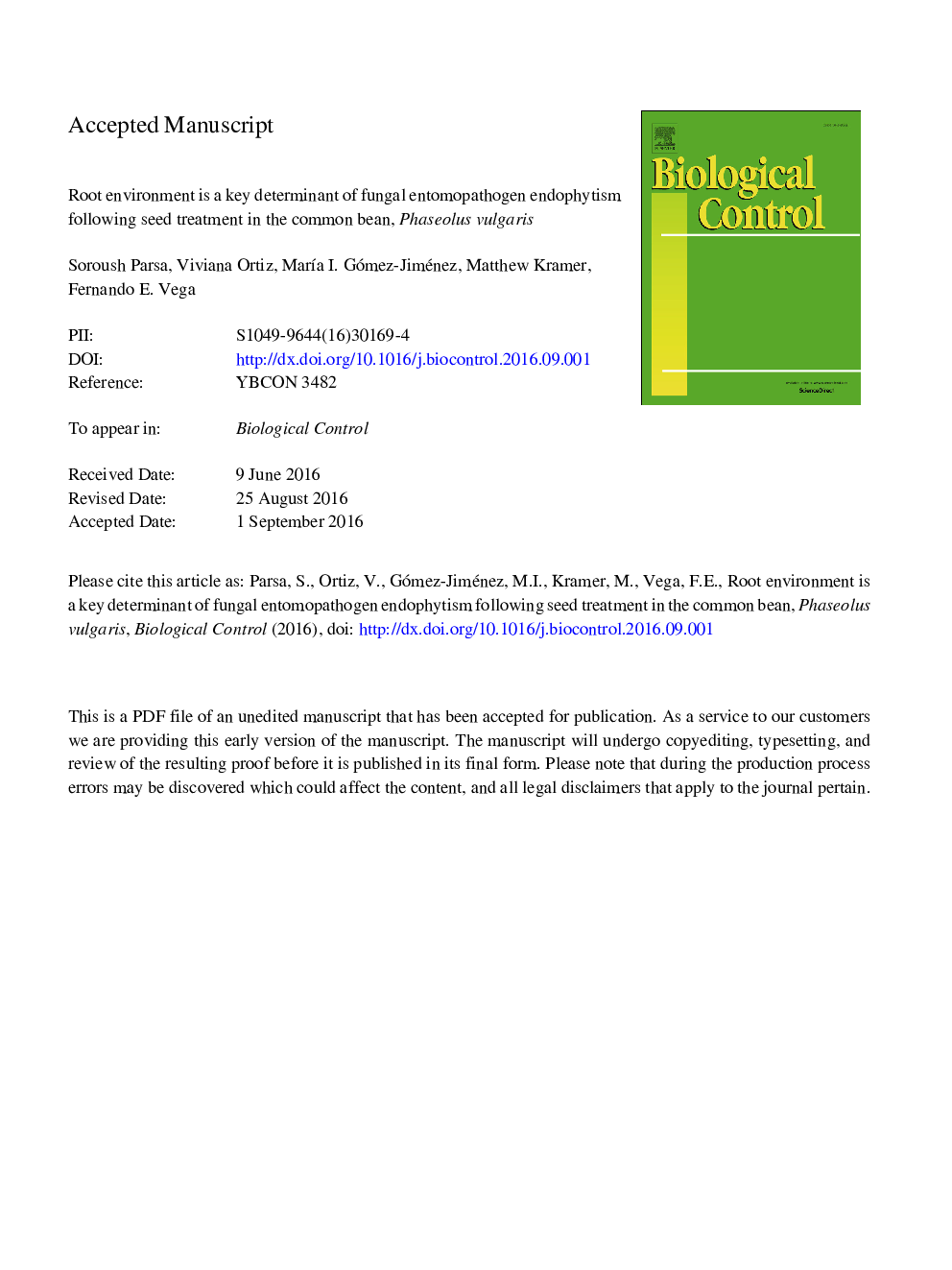| Article ID | Journal | Published Year | Pages | File Type |
|---|---|---|---|---|
| 8877791 | Biological Control | 2018 | 38 Pages |
Abstract
The common bean is the most important food legume in the world. We examined the potential of the fungal entomopathogens Beauveria bassiana and Metarhizium anisopliae applied as seed treatments for their endophytic establishment in the common bean. Endophytic colonization in sterile sand:peat averaged ca. 40% higher for fungus treatments and ca. six times higher for volunteer fungi (other fungal endophytes naturally occurring in our samples), relative to sterile vermiculite. Colonization by B. bassiana and M. anisopliae was least variable in sterile vermiculite and most variable in sterile soil:sand:peat. The impact of soil sterilization on endophytic colonization was assessed in a separate experiment using six different field-collected soils. Soil sterilization was the variable with the largest impact on colonization (70.8% of its total variance), while the fungal isolate used to inoculate seeds explained 8.4% of the variance. Under natural microbial soil conditions experienced by common bean farmers, seed inoculations with B. bassiana and M. anisopliae are unlikely to yield predictable levels of endophytic colonization.
Related Topics
Life Sciences
Agricultural and Biological Sciences
Agronomy and Crop Science
Authors
Soroush Parsa, Viviana Ortiz, MarÃa I. Gómez-Jiménez, Matthew Kramer, Fernando E. Vega,
